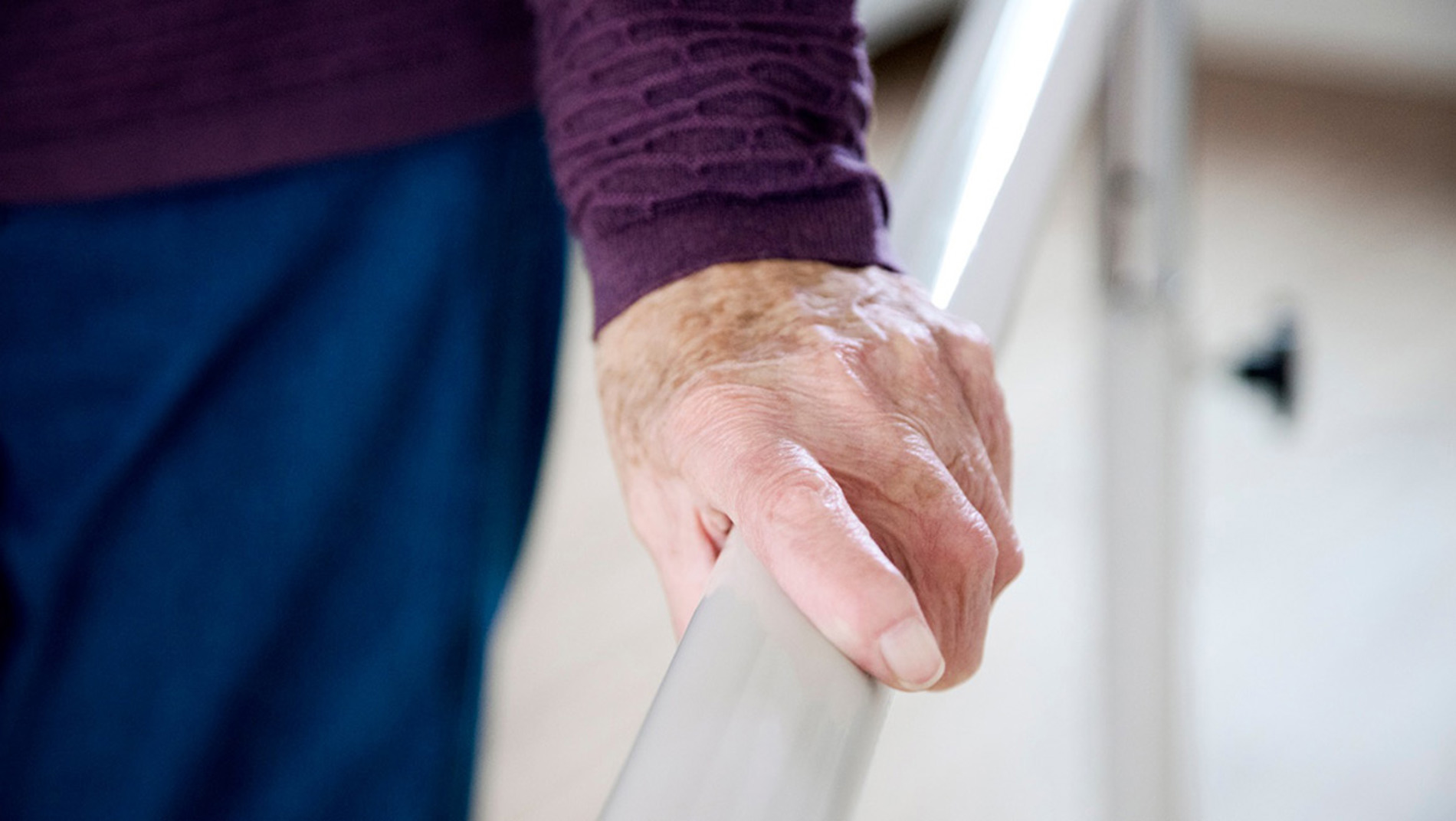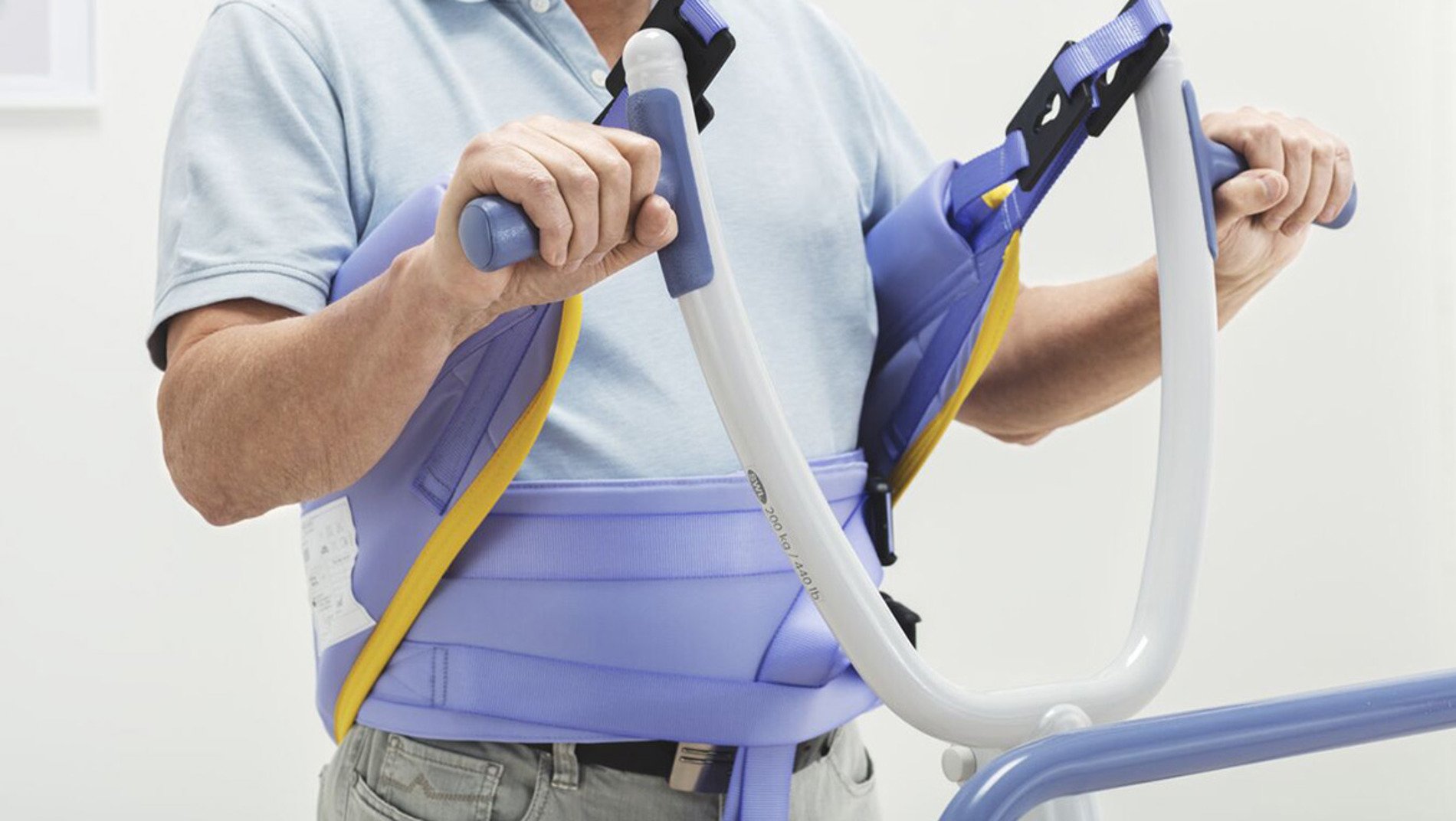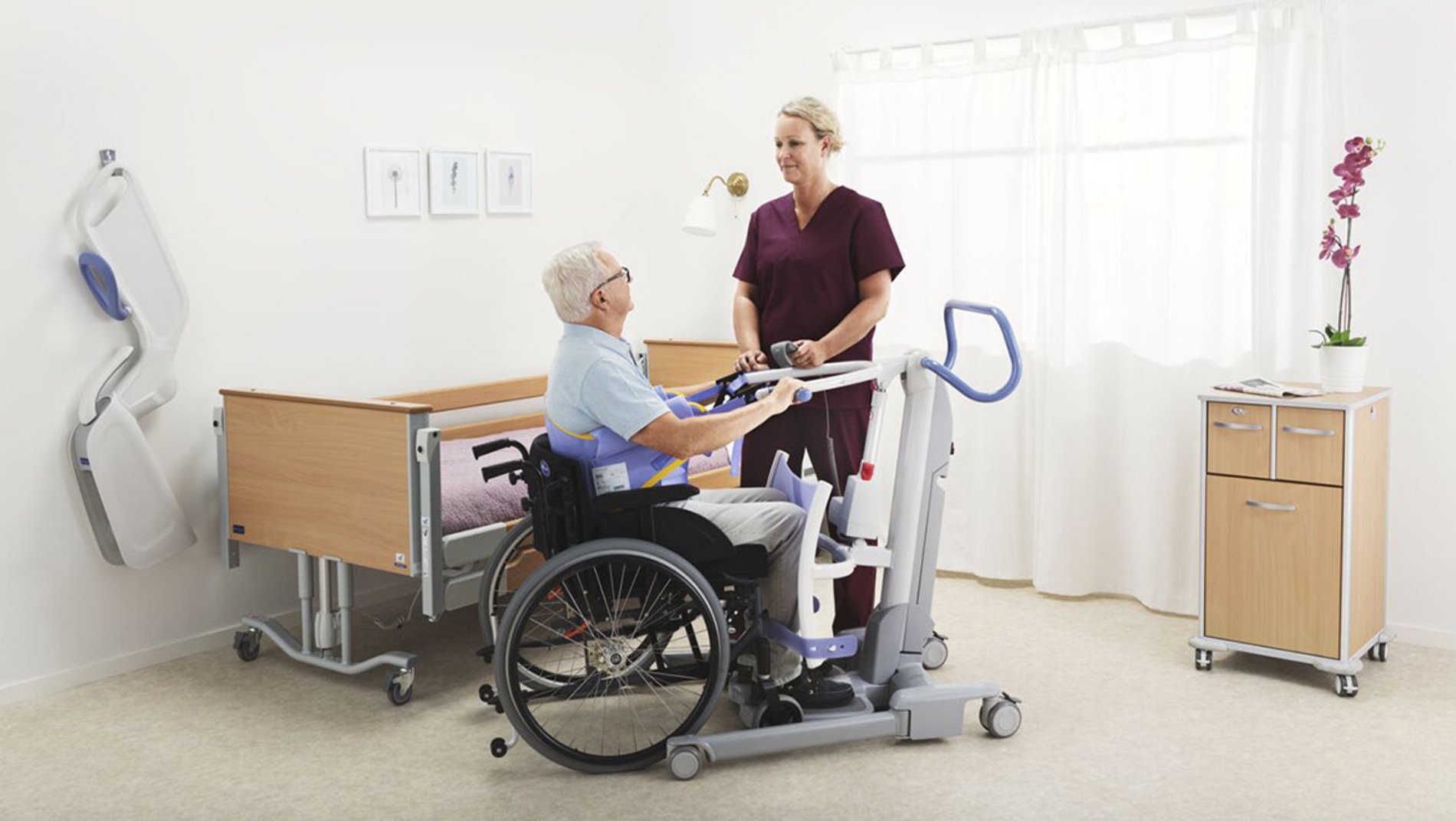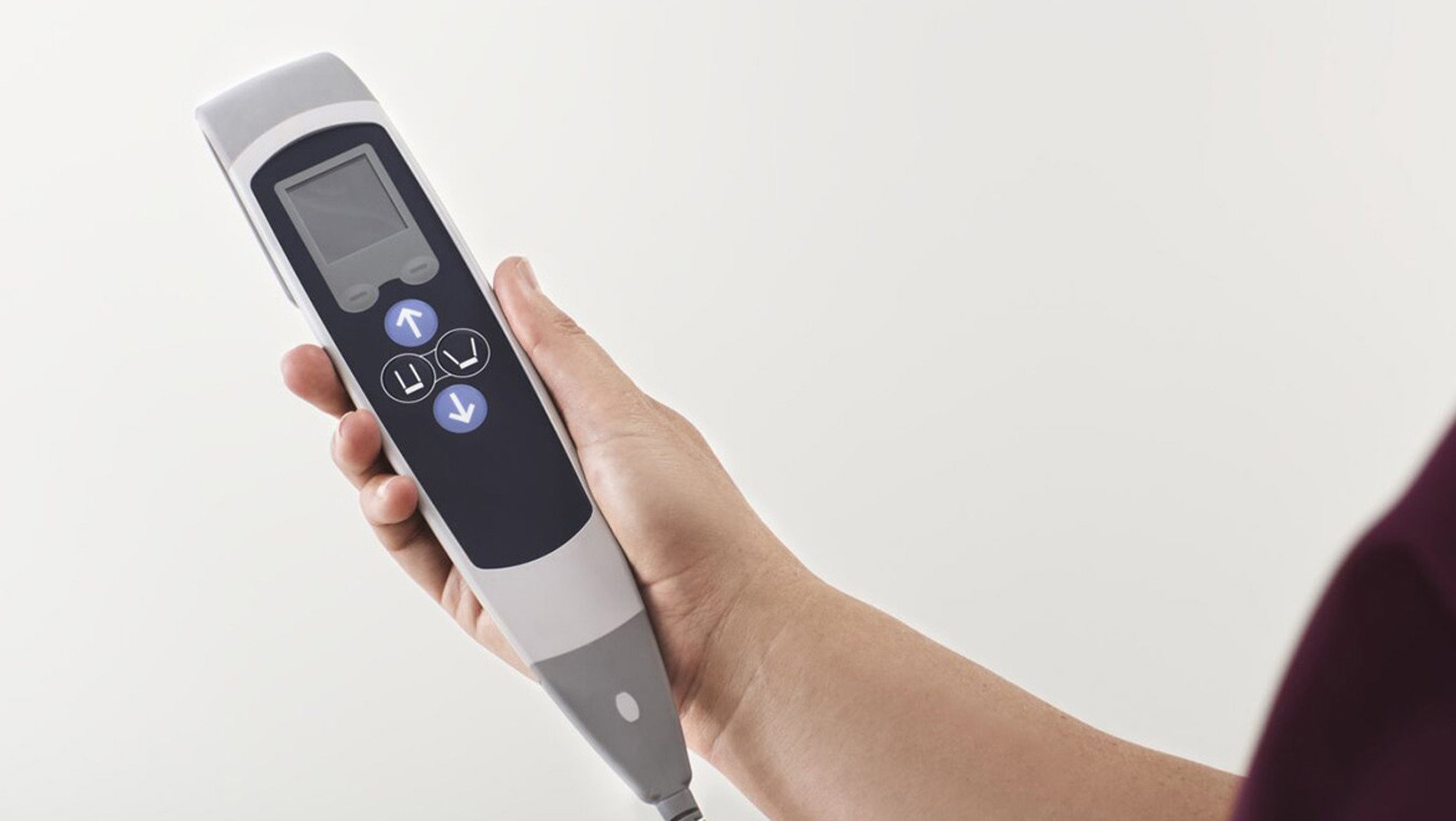5 things to consider when choosing a sit to stand lift for patient transfers
Standing and raising aids, also known as sit-to-stand devices/lifts, are used by caregivers to transfer patients or residents between two seated postures, for example, seated on the edge of the bed to a wheelchair, or wheelchair to commode or shower chair.

A standing and raising aid is a patient lift designed to support only the upper body of the resident and therefore requires the resident to be able to bear some weight. As caregivers can perform a sit to stand transfer multiple times a day, standing and raising aids are an essential part of daily life to help relieve the stresses of weight bearing routines on caregivers and provide a comfortable, safe transfer for patients.
Benefits of standing and raising aids
Manual transfer of a patient is physically demanding and can cause risk of injury to a caregiver¹. Standing and raising aids provide a safer alternative to manual transfers performed by caregivers. Patients and residents also benefit from these devices with less risk for patient falls compared with manual transfers. Standing and raising aids also promote mobility in patients who can contribute to the action or perform part of the action independently².
How to choose a standing and raising aid
Powered or non-powered lift mechanism
Depending on patient mobility there are two types of sit-to-stand transfer devices. For patients/residents who can stand up unaided, a non-powered device should be used. However, for a patient or a resident who does not have the ability to stand but is able to partially bear weight on at least one leg, a powered lift is used.
Powered standing and raising aids typically have an electric lifting mechanism that is powered by a battery. The powered lift is operated by a hand control with buttons for up and down. The lift is designed to make the raising and lowering of the patient or the resident a smooth, continuous movement.

Weight capacity
Weight capacity is an important factor when choosing an appropriate device as patients/residents in your facility may vary considerably. If your facility sees more plus sized patients then a device with a higher max safe working load should be considered.

Battery portability or non-portability
Battery portability is a feature that allows a dead battery to be quickly exchanged with a fully charged battery. Some manufacturers use a portable battery system as a standard, whereas others offer it as an option. Those that offer a portable battery as an option use a non-portable system as a standard, which requires the lift to be directly plugged into an outlet to be recharged.

Hand-held control
A hand held control is typically a push button control used to raise or lower the lifting arm. An important feature is the ability to quickly place the control on the sit-to-stand device during the transfer process. This will free up the caregiver’s hands to assist or position the resident. Using both a fixed control panel along with a hand-held control allows for greater maneuverability when transferring a patient.
Service and maintenance
Service agreements with medical devices that offer a complete range of services for spare parts, such as battery or sling replacements, installations and unforeseen issues are essential considerations when choosing between manufacturers.
Finally, when choosing a sit-to-stand device/standing and raising aid, ease of use, hassle free maneuverability that promotes mobility while being comfortable for patients are all things to consider before selecting a device.
Ready to choose?
An evaluation of 6 different sit to stand devices for use in rehabilitation shows an 'overwhelming preference' for the Sara® Flex knee support during a study in Loughborough University, UK.
You can download this study here:
References:
1. U.S. Bureau Of Labor Statistics, Survey of Occupational Injuries and Illnesses, in cooperation with participating state agencies, https://www.bls.gov/news.release/pdf/osh2.pdf
2. M. Fray et al, An evaluation of sit to stand devices for use in rehabilitation. Loughborough University, UK 2017





